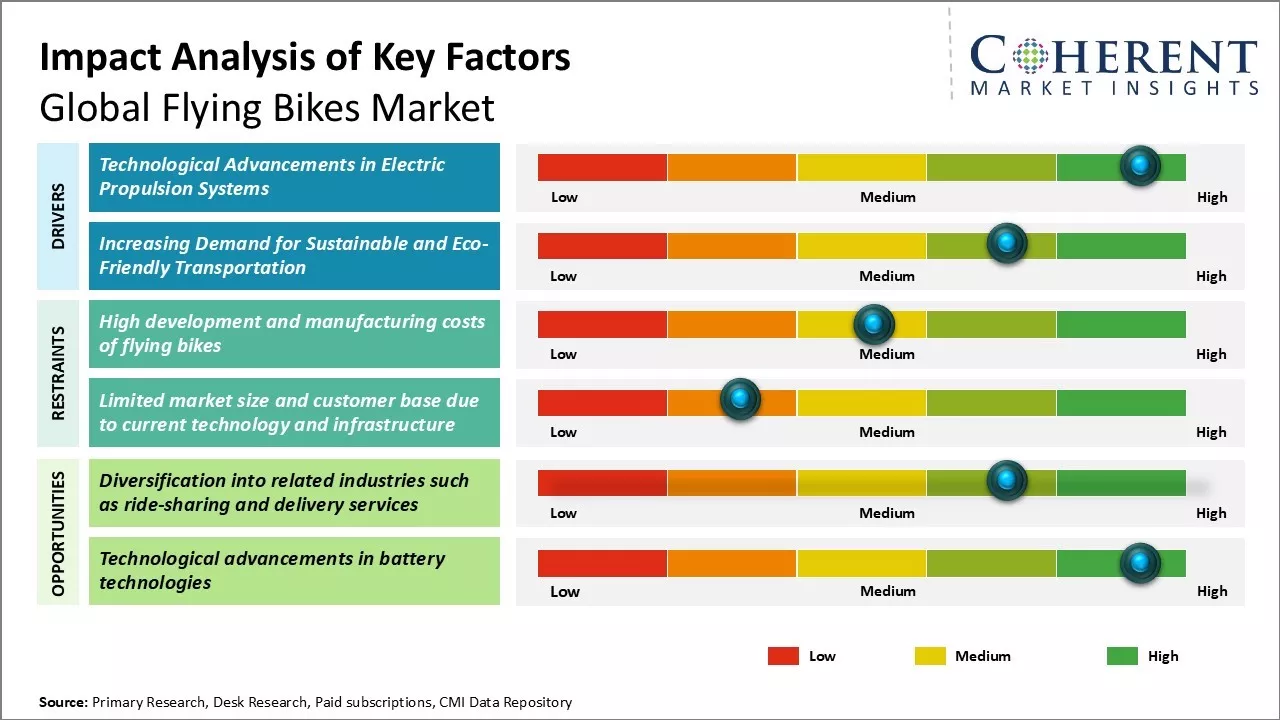The global flying bikes market is estimated to be valued at USD 82.35 Bn in 2025 and is expected to reach USD 291.80 Bn by 2032, exhibiting a compound annual growth rate (CAGR) of 19.8% from 2025 to 2032.

To learn more about this report, Request sample copy
The demand for fast mobility solutions is increasing rapidly globally. Flying bikes provide a more exciting and faster mobility option compared to conventional vehicles. Growing investments in the research and development of advanced battery technologies is also supporting the development of reliable and efficient electric flying bikes. Several startups are working on prototype development and conducting test flights to commercialize flying bikes in the coming years. With continuous technological advancements, the price of flying bikes is expected to decline which can further boost their adoption. However, stringent regulations regarding their use may limit the growth of the flying bikes market to some extent.
Technological Advancements in Electric Propulsion Systems
With each passing year, engineers and researchers are finding new innovative ways to increase the efficiency and range of electric motors. Lithium-ion batteries, in particular, have seen tremendous development over the last decade which is allowing electric vehicles of all kinds to travel farther on a single charge. When it comes to flying bikes, having a powerful yet lightweight electric propulsion system is crucial to achieving sustained flight. Advancements are being made on a near constant basis to miniaturize battery packs without sacrificing energy capacity. This will allow future flying bike models to have longer flight times and be able to access more areas traditionally restricted to gasoline models.
Another area of focus is developing electric motors that are strong enough to lift a person into the air yet compact enough to fit within the frame of a bike. Researchers are experimenting with new motor designs that leverage techniques like sensorless commutation which offers smoother rotational control. Combined with advanced motor controllers, this improves efficiency and responsiveness. More electric flying bike prototypes are now demonstrating the ability to transition seamlessly between manned flight mode and conventional pedal-powered bicycle riding. As the technology matures to the point of widespread commercial availability, it will truly allow for the freedom of aerial transport to blend with traditional cycling infrastructure and roads.
The integration of artificial intelligence into electric propulsion is another promising avenue that could revolutionize flying bikes. With AI, motors could dynamically adjust power output based on real-time load calculations, altitude, and terrain factors to optimize energy usage. This would extend flying range even further. AI controllers may also facilitate autonomous flight capabilities for cargo delivery drones in future. Overall, it's clear that ongoing work on battery, motor and AI technologies will be the driving force that propels the electric flying bikes market towards mainstream adoption within the new decade.
Joining thousands of companies around the world committed to making the Excellent Business Solutions.
View All Our Clients